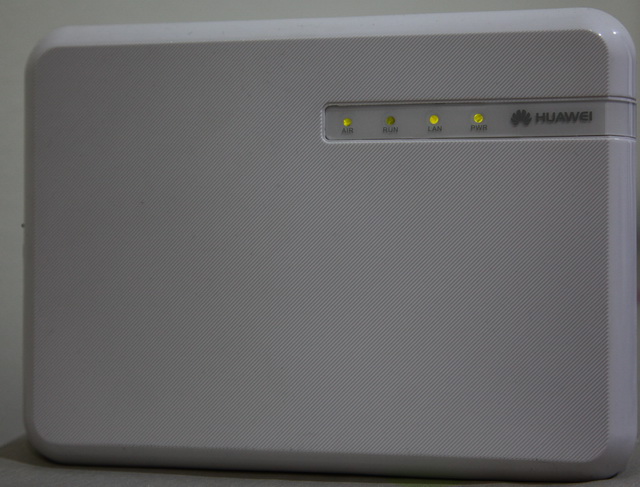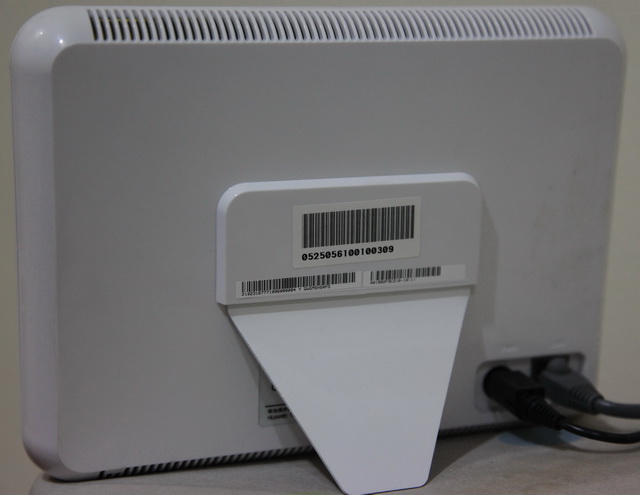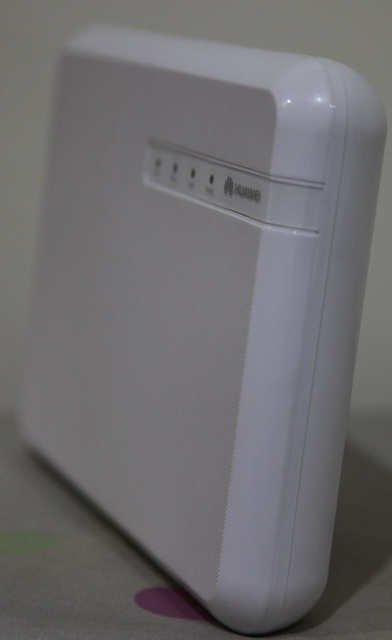The Problem
I’d just moved into my new unit and set up my office in one of the bedrooms when I began to realise that the mobile phone reception was totally unacceptable. I was not receiving calls, having calls drop out and getting text messages hours late, or in once case the following day!
Mobile phone reception is not exactly something you put on your check list before you sign a two year lease!
Calls to Starhub, my local mobile network provider, proved to be rather fruitless at first. I was told they would look into the network coverage at my location and they would receive a report from their network team in a few days. Once they had the report they would call me back to let me know the outcome. Of course I had to call Starhub back myself and when I did they gave me the same story, so I was not impressed. Eventually someone did look at the problem and the person I talked to said the network guys knew as soon as they gave my address that there is a coverage problem at my location.
In the meantime I’d found a product that Starhub offers, called Home Zone, that looked like it would be able to solve the poor reception problem in my unit. To save you the whole story of the many phone calls and trips to the customer service centre, let me just say Starhub and I came to an agreement and I now have Home Zone operating.
What is it?
Home Zone is a service from Starhub that essentially gives you a mini mobile phone base station in your own home, thus resolving any local network coverage problems. The device used, known as a femtocell, connects to your existing Starhub MaxOnline service. Your mobile phone then connects to the femtocell which transmits all voice calls, text messages and internet traffic over your home internet connection.
You can have up to 4 Starhub post paid mobile phone numbers connected to the femtocell by providing the list of approved numbers to Starhub, which you can change at any time. This means Home Zone can solve your immediate family’s/flatmate’s reception problems, assuming they are all on Starhub’s mobile network. However visitors to your home will still suffer the poor reception problems you had before you installed Home Zone.
For pricing information please refer to the Home Zone page on Starhub’s website, as it is likely to change over time.
How Does it Work?
Starhub provided the UAP3801 femtocell from Huawei, together with the following accessories in the box:
- Power adapter
- Power cable
- Quick guide
- Ethernet cable
- Tabletop support
- Wall mounting kit
The UAP3801 is a UMTS (3G) device using 1920 MHz to 1980 MHz for the uplink and 2110 MHz to 2170 MHz for the downlink. The device uses less than 17 W, excluding the power adapter and can operate from 90 V AC to 264 V AC with 47 Hz to 63 Hz.
The device has four LEDs on the front: AIR, RUN, LAN and PWR. The first two can be green, yellow or red, while LAN and PWR are only green.
AIR indicates the quality of the signal; green being the best and red showing strong interference. A blinking light shows the device is being used.
RUN indicates the status of the device; green being ready, yellow that set-up is in progress, red that there is a serious fault.
LAN is straight forward, with green indicating a network connection and flashing green showing that data is being transmitted.
PWR is either green to show the device has power or off.
I found it useful to understand what each of the above LEDs meant during the set up of the device, troubleshooting or when I was rebooting it. It can take up to 10 minutes before everything comes online sometimes.
On the rear of the device is a power socket and an Ethernet port. There is also a slot for the desktop or wall mounting kits to slide into.
On the side (not shown) there is a SIM card holder (for user validation) and a restart button. That’s correct, not a reset button to get the factory defaults, but a restart button. It explicitly says in the manual that this button retains all customised data and that the device is not restored to the factory default. As far as I can tell it does the same as an on off switch, or simply removing the power from the rear of the device!
Installation
You need to keep in mind that the signal disperses from the front of the device, which is different from your typical wifi access point that radiates out in all directions. Therefore you should place the device in a room where you will make the most calls and face it pointing towards the rest of your home.
The main restrictions as to where you can install the device are the length of the power and Ethernet cables. There is also a warning in the manual stating that you should not have the device within 20cm of a person for personal safety!
Once you have decided where you will place the femtocell you need to decide on whether to use the wall mounting kit. Given that I’m only renting my unit I decided not to wall mount the device. This also gives me some freedom to move the femtocell around to find the best location for it. The most important thing is to remember to keep the device upright for effective heat dissipation, not to mention proper signal dispersion.
Configuration
Starhub sent an engineer out with my device to do the installation. I must say that he did a great job and only left once the device was working correctly, which required calls back to the office to get the mobile numbers entered into the system and other set-up steps.
From a user perspective you just have to provide a working MaxOnline connection with DHCP active. This can either a direct connection to the Starhub cable modem or through a router/switch. I have used it on a network with the follow topologies:
- femtocell <->switch <-> router <-> cable modem.
- femtocell <-> cable modem.
Usage
Starhub have included a special feature to let you know when you are on the Home Zone service. When you make a call a voice will tell you “You’re on Home Zone Service” before you start to hear the ringing tone. This is quite useful to make sure you are on the Home Zone network before you make a call. However it can also be a little annoying if you are calling an automated system that immediately picks up the call, where you miss the first few seconds of the call, often telling you which number you need to press!
Once a call is connected I have found the performance in terms of voice quality to be no different than a normal call on the main network. The main problem related to call quality is the coverage area of the device. If I walk to my bedroom or living area my mobile phone may switch to the normal Starhub network with an audible click and a short loss of audio. If I’m walking in and out of range of the femtocell this can be quite annoying. I feel that it needs another 5-10m coverage to be a complete solution. The easy solution is to stay within range of the femtocell! 😉
To test the internet bandwidth I turned off my wireless internet on my phone and performed a few tests from Speetest.net:
- Home Zone/Femtocell 1.73Mbps down, 0.21 Mbps up
- Starhub Normal Network 1.93Mbps down, 0.24 Mbps up
- Home Wireless 23.67Mbps down, 7.86Mbps up
I’m always on wifi when at home, so the network performance of the Home Zone service is not really a major concern, but it’s quite adequate.
The reliability of the service when I first had it installed at the end of November, 2010 was not the best. The phone numbers provided were forgotten a couple of times, so the phones would not connect to the femtocell. This required a call to Starhub to rectify. The device would sometimes show a red light for no apparent reason and require a reboot too. Sometimes late at night, around 11 pm to 1 am my mobile phone would end up back on the normal Starhub network. This required me to manually select the femtocell network on my phone.
To complicate matters I upgraded to the new fibre optic based internet service from Starhub in the new year. I was told by the guy who installed my Home Zone, people I talked to on the phone at Starhub and the person who signed me up for the fibre optic plan that Home Zone should be no problem because it just needs a network connection. Well they were wrong!
Starhub, to their credit, did try to get it working with some quick fixes and also tried a few other ideas. The lady who was assigned my case was one of the most helpful Starhub staff I have ever dealt with. She called back when she said she would and even got someone else to call me when she was sick one day! Unfortunately I had to resort to keeping the MaxOnline service active for another 3 months. Hopefully, once the allocated time is up I can call back and find out that they have fixed the compatibility problems with their MaxInfinity fibre optic service.
After all that drama the service in February, 2011 has been very stable with no need for me to reboot the device at all. Sometimes my phone will still end up on the normal Starhub network, but it’s probably only once or twice a week now.
Conclusion
Home Zone works quite well for my specific requirements, but I do wish it had a bit more range to cover all of my home. If you have mobile network coverage problems and depend on your mobile phone for business or just can’t afford to miss calls or text messages then this could be a great solution for you. Apart from solving the coverage problems you may also get benefits from reduced bills if you have family members who are heavy users of their mobile phones at home.
Pros
- Solves mobile network coverage problems
- Quite reliable
- Easy to move around your home
- Could save heavy mobile phone users some money
Cons
- Range is limited to about 10m
- Quite expensive for light mobile phone users
- Does not work on Starhub’s fibre network (February, 2011)
I’ve posted an update on the last point: Starhub’s Home Zone Works on Fibre!



